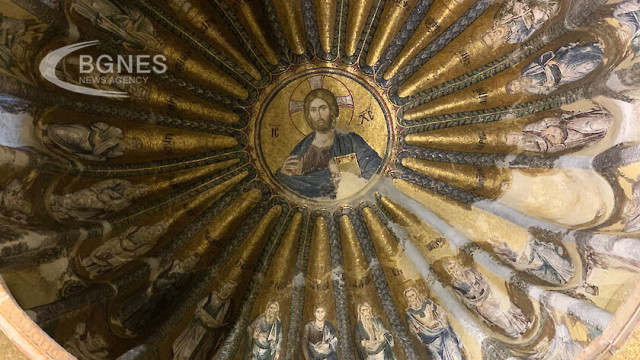Holy Wednesday
Gospel of Mark 14: 1-9
THE WASHING OF THE LORD JESUS CHRIST WITH OIL
After two days came Passover and the Feast of Unleavened Bread; and the chief priests and the scribes looked how they might take Him by deception and kill Him; but they said: as long as it is not on the holiday, so that there is no commotion among the people. And when He was in Bethany, in the house of Simon the Leper*, and was sitting at the table, a woman* came up, carrying an alabaster vessel with ointment of pure, precious spikenard, and breaking the alabaster vessel, she anointed it on His head. And some were indignant and said among themselves: why was this wastage of the ointment? Couldn't it have been sold for more than three hundred denarii and the money given to the poor? And they grumbled against the woman. But Jesus said to them: leave her; why are you disturbing her? She did a good deed for Me. For you always have the poor with you, and when you want you can do them good; but you do not always have Me. She did what she could: she went ahead and anointed My body for burial. I tell you the truth: wherever this Gospel is preached throughout the world, her memory and what she did will always be told.
Simon Lepers many of the Bible scholars, including Blaise. Theophylact Bulgarians, consider him to be the same as Simon the Pharisee. He was nicknamed "The Leper" because he had recently been healed by the Lord of the incurable disease. Others assume that he is the father of Lazarus, who invites Jesus Christ and His disciples to a feast in his home to express his joy that his son has come back to life.
"a woman approached" is an expression that has also caused conflicting conjecture among interpreters. Considering the protective speech of Christ himself to the woman, most of the biblical scholars believe that this is the famous repentant sinner Mary Magdalene. Confirmation of this assumption is the verse from a church song that is sung in the Orthodox evening service on Holy Wednesday: "From the depths of mortality raise me as you raised Lazarus on the fourth day."
Gospel of Matthew 26: 1-5, 14-16
JUDAS ARGUES THE PRICE OF BETRAYAL
When Jesus finished all these words, he said to his disciples: you know that after two days will be the Passover and the Son of Man will be crucified. Then the chief priests and the scribes and the elders gathered together in the house of the high priest named Caiaphas, and decided in council to trap Jesus by deception and kill him; but they said: only not on the holiday, so as not to cause a commotion among the people. Then one of the twelve named Judas Iscariot went to the high priests and said: what will you give me that I will hand Him over to you? And they offered him thirty pieces of silver. And then he was looking for an opportunity to betray Him.
Crucifixion is an old word meaning "crucifixion". In this case we are talking about the Crucifixion of the Cross of the Lord Jesus Christ. In ancient times, crucifixion itself was considered the most shameful, painful and cruel death. Only the most dangerous robbers, murderers and slaves who committed the most heinous crimes were condemned to crucifixion. The agony of the crucified was prolonged and unimaginably painful. They, literally speaking, died from their weight: their organs fell down so that the inside of their body filled with blood, the lungs were compressed and the crucified person stopped breathing and died of suffocation. To alleviate their suffering, the guards who stood by the tormented prepared drinks for them, with which they drugged them and they fell into a trance. According to the Jewish law, the crucifixion served as a curse, a disgrace forever, and this can explain why the members of the Sanhedrin with such enviable persistence insisted that the Lord Jesus Christ suffer this exact punishment. On the other hand, the Cross itself and the Crucified on it have a symbolic meaning: the joining of the two parts – vertical and horizontal – depicts the integrity and unity of the Creator and Creation, the unity of the visible (material) and invisible (spiritual) worlds; the two inseparable but also unfused natures of Jesus Christ - the Divine and the human. Finally, the very figure of the Crucified One covers the whole figure of the Cross, which figuratively means that His authority is over the whole world, and the sacrifice in which He offers Himself applies to all people on the whole earth. /BGNES
----------------------
Sonia Zafirova, philosopher. The text, which was specially provided to BGNES, is part of the book "Christ's light enlightens all", which is about to be published.







